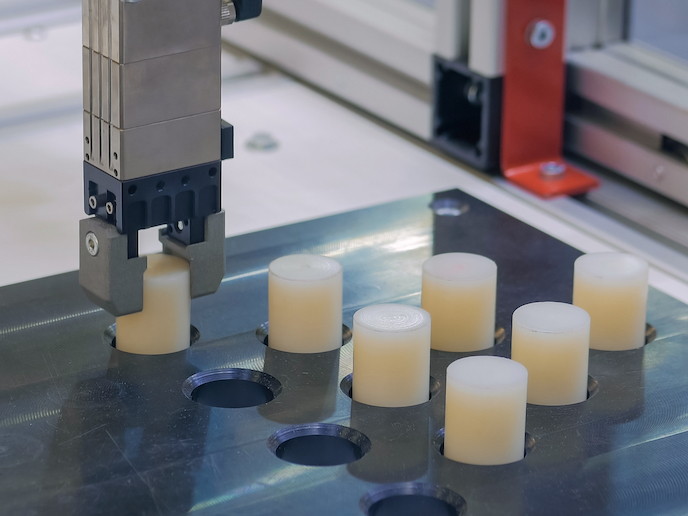Manufacturing robots get smarter thanks to artificial intelligence
Robots are a ubiquitous part of the manufacturing process, doing everything from picking parts from bins to the actual assembly work for final products. Now, with the advancement of artificial intelligence(opens in new window) (AI), industrial robots are set to enter a new era of capability and intelligence – ultimately revolutionising manufacturing as we know it. At the forefront of this effort is Cambrian Intelligence(opens in new window), a company specialising in AI-guided robots for manufacturing. “When retrofitted with the company’s AI software solution, a robotic arm gains human-level skills for various manufacturing tasks, such as pick and place, bin picking and cable insertion – to name just a few,” says Miika Perä, CEO of Cambrian Intelligence and coordinator of the EU-funded project OS for Ind robots (Disrupting industrial robots with AI software – how new AI-driven software can be used to program industrial robots to do new tasks faster, resulting in massive productivity savings) project. “This capability not only reduces robot configuration times down to just a single day, it also increases flexibility and cuts costs tenfold.”
Bin picking capability
Before manufacturers can leverage the benefits of AI-empowered robots, the software must be available on the market – which is where the OS for Ind robots project comes in. “With the support of EU funding, we were able to increase Cambrian’s technology readiness level(opens in new window) and identify the best route for bringing the product to market,” explains Perä. A major breakthrough that came out of the project was the development of an AI-based bin picking technology. Bin picking is the ability of a robotic arm to sort through a chaotic arrangement of pieces inside a bin and select the objects needed. With this capability, manufacturers can, for example, have robots bin pick parts and place them in a pre-assembly kit for use further down the assembly line. “With this bin picking technology, many manufacturing tasks can be easily automated,” adds Perä. Perä notes that the challenge with adding enhanced capabilities like bin picking is to make sure the system doesn’t become overly complicated: “There is always a battle between adding elements and simplifying things. But we managed to prune the technology in the right way, so it remains both intuitive and manageable.”
Market ready
Through the OS for Ind robots project, researchers were able to confirm that Cambrian’s AI-based technology performs as expected in real world applications. With the core technology working, the company is now focused on adding such customer-facing features as a user interface and tools to enhance the system’s pick and place skills. “In the future, skills like cable insertions and handling soft materials will be added,” says Perä. “We can then automate even more tasks and, as a result, bring some of the manufacturing that has been offshored back to the EU.” With over 2 million industrial robots currently in use, the potential market for Cambrian’s AI-based robotic software is vast: estimated at EUR 61 billion globally and backed by double digit growth. Thanks to the advancements made within this EU-funded project, the company is now well-positioned to secure a large portion of this lucrative market.







